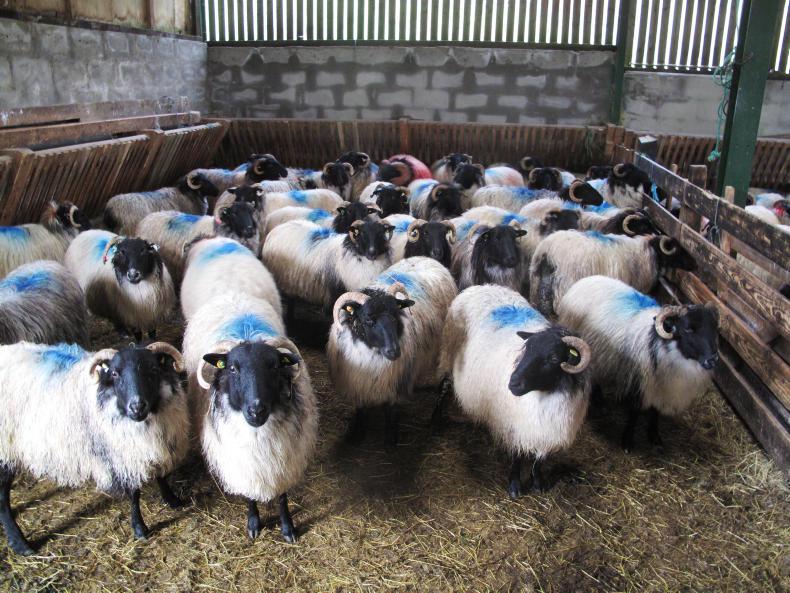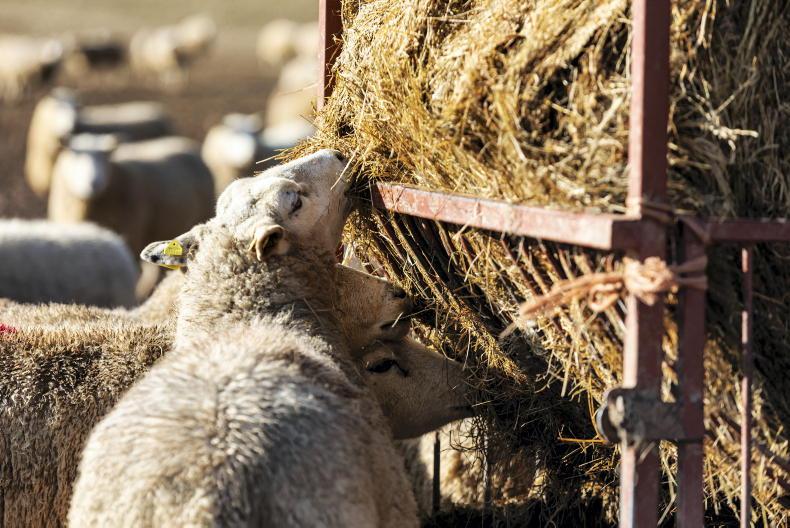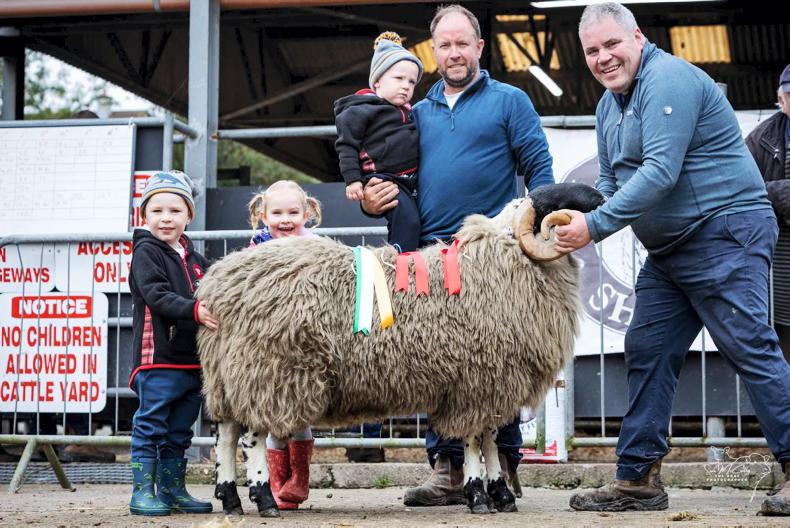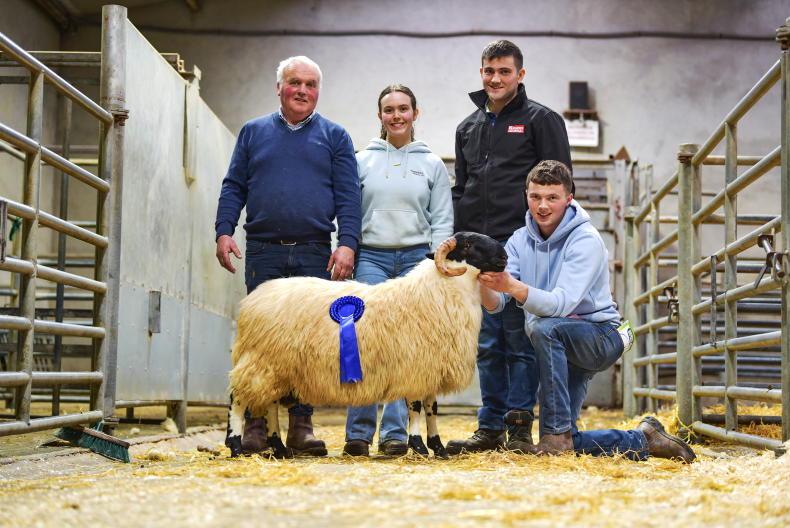A small portion of hill sheep flocks are commencing breeding, while the majority of flocks are still a few weeks from joining ewes with rams.
The earlier breeding flocks are likely to be those with more productive hills or a good combination of lowland or improved pasture and hill or mountain grazing.
Those farming on better-quality ground have more options than those on harder hills in terms of both the type of ewe that can be carried and the lamb output potential.
Crossbreeding is a good option for these flocks to increase the value of progeny.
The potential level of crossbreeding in a flock will depend on the flock’s replacement rate and the average litter size.
Teagasc experience, through its BETTER Farm sheep programme, shows the level of crossbreeding possible for a range of flock litter sizes, as shown in Table 1.
Recommendations
The recommendations in the table are based on a hill flock with a replacement rate of about 24%, while also allowing for 10% of any potential ewe lambs to be deemed unsuitable.
When deciding on a sire for crossbreeding, it is worth considering your target market.
For example, mating with a Bluefaced Leicester sire will produce Mule replacements with good maternal attributes, while using a terminal sire will increase the value of progeny if selling as stores or bringing through to finishing.
Body condition scoring
For later-lambing flocks, it is important to keep ewes on track for breeding.
Research and on-farm experience has continually shown that addressing body condition and improving the liveweight of Scottish Blackface ewes delivers huge advantages in terms of increasing litter size, reducing barren rates and tightening the lambing spread.
Experience from the Teagasc BETTER Farm sheep programme shows a difference in pregnancy rate of over 10% between ewes at a condition score of 2 at mating and those at the desired condition score of 3.
It also resulted in a five-day shorter lambing spread, with ewes falling below optimum body condition generally cycling later.
For ewes on semi-improved hills, experience from the programme points to a target liveweight of close to 50kg or higher for good-quality hills, while, for ewes on harder hills, this reduces to in the region of 45kg liveweight.
Parentage recording
The level of parentage recording is low on hill farms, with huge scope to drive progress through this avenue.
Single-sire mating is the most straightforward and lowest cost way of identifying parentage.
However, it does have risks in terms of ram infertility or subfertility.
Therefore, raddling rams is critical when operating single-sire mating.
While not straightforward to operate in a hill system, even applying a raddle for the second cycle will help to identify problems.
Switching rams between groups will also deliver benefits, while some farmers operate a pure-breeding policy for the first cycle and then breed later-cycling ewes in a crossbreeding programme.
This ensures replacement ewe lambs have the best chance of being at a maximum weight before the subsequent winter and perform better on the hills, while increasing the value of later-born lambs.












SHARING OPTIONS